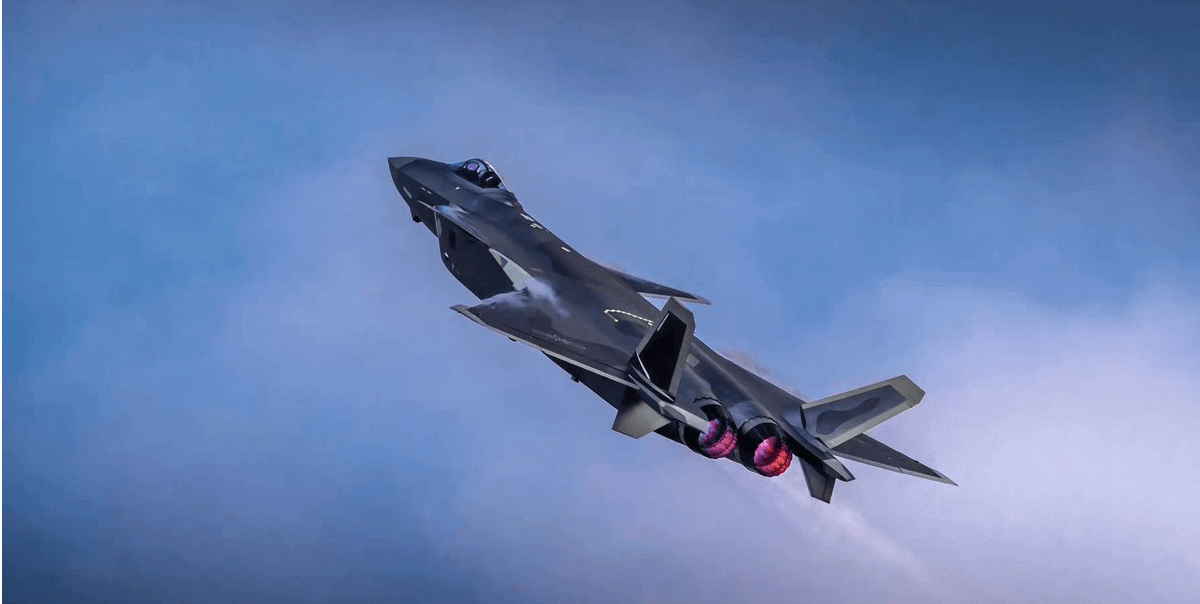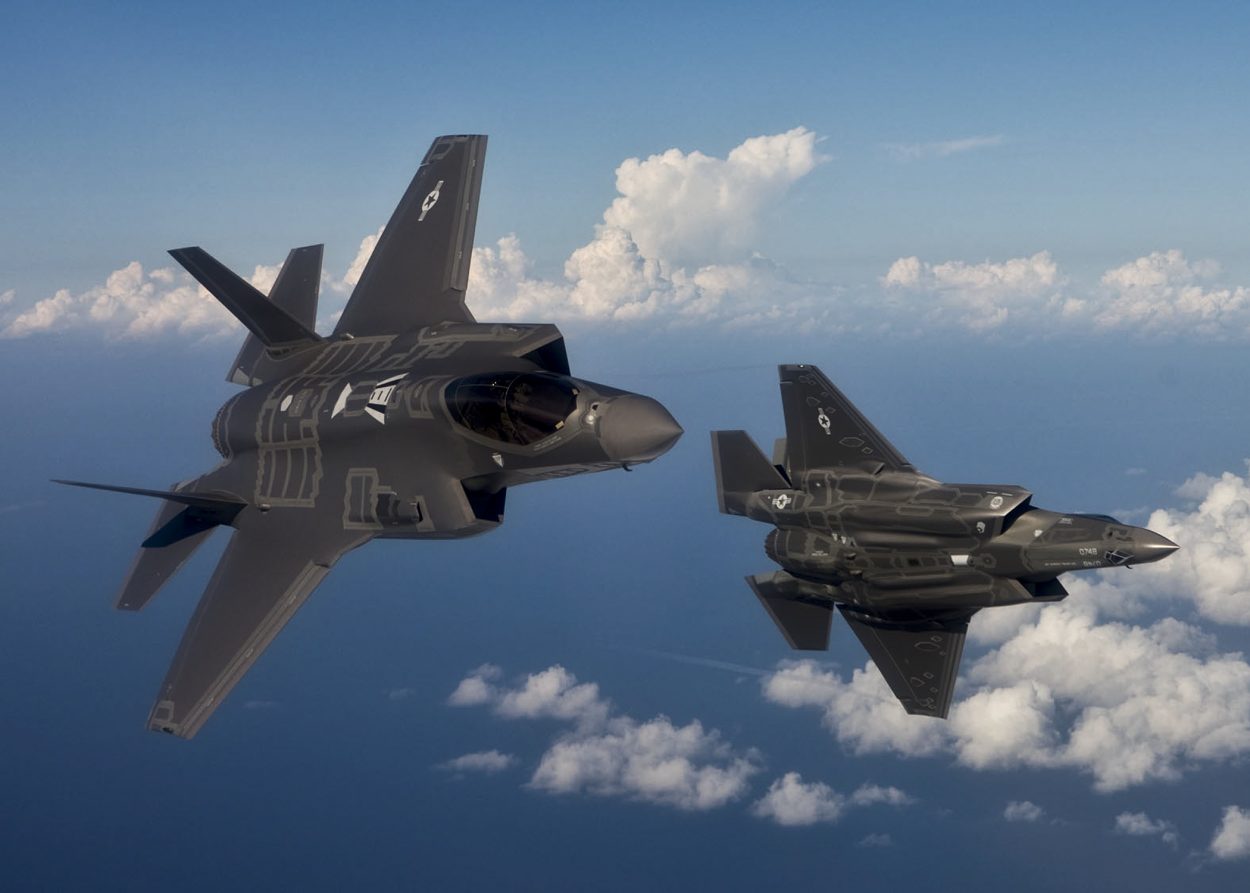China has often been accused of cyber espionage and theft of classified military information, especially by its arch-rival, America. Even Russia, which now happens to be China’s staunch ally, leveled similar accusations against Beijing in the past.
China’s Stupendous Rise As A Naval Power Alarms That West, Threatens US Dominance — New Report
A few years ago, Russian state media Sputnik had criticized China’s J-15 aircraft for its many drawbacks. Moscow also accused Beijing of reverse-engineering a Russian Su-33 that it brought from Ukraine to produce its own carrier-capable aircraft, the J-15.
However, this is neither about Su-33 nor about Russia. Both the countries have left the animosity behind to rework a relationship that challenges the United States, their common adversary.
The United States undeniably has one of the largest and the most advanced Air Forces in the world. It boasts two fifth-generation stealth fighters — the F-22 Raptor that it refuses to sell to any country and, the mighty F-35 Lightning II, one of the most advanced combat aircraft in the world.
The US Department of Defense and program contractors have been reasonably tight-lipped when it comes to technology and some of the salient features of the F-35. For example, specific information about the F-35’s electronic warfare capabilities is difficult to come by.
F-35B Stealth Fighters: Navy & Air Force Warplanes To Be Integrated To Boost ‘Expeditionary Capabilities’ — Italy
The United States alleged that China had stolen the technology used in F-35 fighter aircraft to manufacture its own fifth-generation stealth fighter.
The suspicion of China’s role in stealing F-35 information first surfaced in the public domain after former US National Security Agency contractor Edward Snowden allegedly leaked some classified papers to a German publication in 2015. The leaked data showed the full extent of China’s cyber-espionage attempts.
The records shared with Der Spiegel, a German newspaper, indicated that Chinese hackers were able to access top-secret information about the F-35 Lightning II joint strike fighter jet. According to insiders, the data leak occurred at principal subcontractor Lockheed Martin in 2007.
Further, in 2019, the then National Security Adviser of Donald Trump’s administration, John Bolton, had accused China of stealing the US technology to make a stealth fighter of its own.
The Curious Case Of Chinese Hacking
On August 1, 2018, China commemorated the People’s Liberation Army’s Founding Day by deliberately leaking some high-resolution photos of the next-generation J-20 stealth to the media.
The J-20 photographs released later in 2019 provided a close-up of the new interceptor’s fuselage. They also revealed a sensor system that appeared to be identical to the Lockheed Martin Electro-Optical Targeting System (EOTS) on the front of the F-35 Lighting II.

Many terabytes of data related to the F-35 program are believed to have been stolen by Chinese hackers, including information on the F-35’s radar design – such as the number and types of modules used by the system – and its engine, including the method used for cooling gases, leading and trailing edge treatments, and aft deck heating contour maps, stated 1945.
Chinese hackers also appear to have obtained material regarding the US Air Force’s F-22 Raptor and B-2 stealth bomber, as well as space-based lasers, missile guidance and tracking systems, and designs for nuclear submarines and anti-air missiles.
J-20 cockpit vs F-35 cockpit pic.twitter.com/tLNFdHJ80J
— 彩云香江 (@louischeung_hk) December 8, 2021
These thefts, including those of F-35-related information, are thought to be part of a larger Chinese cyber campaign dubbed “Byzantine Hades” by US officials. This campaign, which may have begun as early as 2006, has been attributed to Technical Reconnaissance Bureaus operating as part of the People’s Liberation Army’s Third Department.
The Chinese reportedly preferred “spear-phishing” approaches to gain access to confidential material, which entailed compromising email accounts and passwords in order to enter secure networks.
New Wikileak US State Dept cables detail Byzantine Hades: US system breaches *traced* to Chinese military http://reut.rs/gOaK6a
— Chris Wysopal (@WeldPond) April 14, 2011
Secret US State Department documents obtained by Wikileaks and made available to Reuters by a third party trace system breaches to the Chinese military, dubbed “Byzantine Hades” by US investigators.
According to the cable, the sites were registered in Chengdu, the capital of Sichuan Province in central China. The sites were set up by Chen Xingpeng, who utilized the “exact” postal code in Chengdu used by the People’s Liberation Army Chengdu Province First Technical Reconnaissance Bureau (TRB), a Chinese military electronic espionage outfit, said a previous report of Reuters.

Since then, there have been several doubts regarding the J-20 aircraft as some of its components have some eerie similarities with the F-35 design including the stealth feature. Nonetheless, US military experts have often dismissed China’s claim that J-20 is a fifth-generation fighter.
However, the J-20 ‘Mighty Dragon’ has two nose canards, which make it distinct from the F-35. There is another fifth-generation stealth fighter in China that remains under development. It has the same specifications as the American F-35 and some western analysts have raised doubts that China may have stolen technology to manufacture the futuristic J-31 (FC-31) fighter aircraft.
Was FC-31 Reverse-Engineered From F-35?
Information pertaining to the F-35 that was allegedly stolen by Chinese hackers was most likely incorporated into China’s efforts to create sophisticated fighter aircraft, notably the J-20 and, in particular, the FC-31 (previously known as J-31).
World’s First Private Space Station: As ISS Nears Retirement, Hi-Tech Corporates Vying To Build The Next ‘Space Base’
Indeed, public images of the FC-31, as well as Chinese media coverage of the aircraft, reveal significant similarities between the two.
The Shenyang FC-31 is a fifth-generation stealth fighter and will be China’s second indigenously produced stealth aircraft when it becomes operational. The FC-31 is being designed as a multirole fighter, similar to the F-35, and will be capable of a variety of missions such as close air support (CAS) and air interdiction operations, as well as the suppression of enemy air defenses, and may also be capable of being operated as a carrier-based fighter.

The FC-31 is powered by two Russian-designed RD-93 turbofan engines and has a maximum speed of 2,200 km/h and a range of more than 2,000 km. The aircraft can be equipped with cutting-edge avionics such as multifunctional displays, a helmet-mounted sight, an electro-optical targeting system (EOTS), altitude director indicator (ADI), and advanced sensor and communication systems.
India’s Next Naval Fighter: Closely Contested By F-18 Super Hornet, Rafale-M Could Finally Strike A Chord With The Navy
The FC-31 is armed with an internal cannon and two internal weapons bays each capable of carrying two missiles, as well as three hardpoints for placing armaments on each of its wings.
Doubts regarding possible theft of American technology would be cleared once China officially unveils and operationalizes its FC-31.
- Contact the author at sakshi.tiwari9555@gmail.com
- Follow EurAsian Times on Google News
- VIEWS PERSONAL




